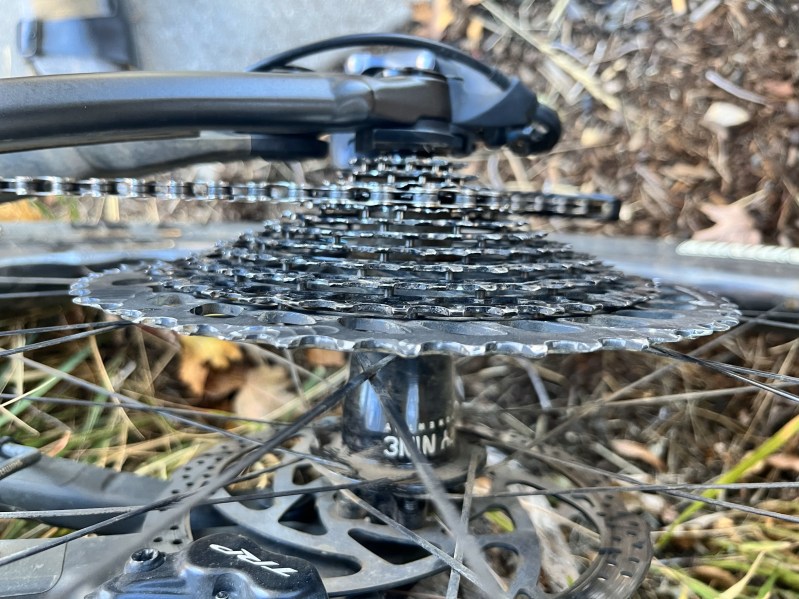
Unless you are riding a chair lift at a bike park or doing some shuttle laps with your friends, riding your mountain bike up the hill is a necessity. Unfortunately, mountain bike climbing is a must—we have to push through the ups to enjoy the downs.
Fitness is a significant aspect of mountain bike climbing. If the simplest of climbs have you gassed, you will hate every minute of it. But for those of us who do have decent fitness, we can turn the chore of mountain bike climbing into fun.
But to make the ups fun, knowing a few basics to make climbing more manageable is helpful. While climbing will likely be more challenging than descending, if you start regularly using these basic mountain bike climbing practices, you may find that you enjoy pedaling your bike uphill.
Your seat is important

Knowing what to do with your mountain bike’s seat, also known as your saddle, is incredibly important. With dropper posts becoming standard on nearly every modern trail bike on the market, the added convenience of adjustable saddle height on the fly can also add confusion. Knowing where and when to position your saddle can make mountain bike climbing much more manageable.
Let’s look at the two most common mountain bike climbing scenarios you will likely encounter: a forest road climb and a more technical singletrack climb.
Forest road
For this climb, you will want the dropper post to be fully extended. Having the dropper post and saddle fully extended will put you in the most comfortable climbing position.
With a range of dropper post sizes that will work on your bike, you need to find the one that works best for you. You want a dropper post with enough travel to get the saddle out of the way on descents but isn’t so long that you can’t reach the pedals. You should be able to have the dropper post fully extended and keep a slight bend in your knee while pedaling.
Technical singletrack
The forest road is easy, as it usually involves just putting your head down and pedaling. Jumping over to singletrack climbing is more complicated, as it can often encompass climbing up rocks, roots, or other tricky obstacles. This usually means more movement in with your dropper post.
Traction is the most critical factor when climbing, and traction comes from having our butt on the saddle. Sitting on the saddle puts more weight on the bike’s rear, helping prevent the rear tire from slipping. However, if there is something like a rock shelf we need to get up on a climb, we won’t be able to do that from our saddle. Here is how you should attack that obstacle.
- Try to gain as much momentum as possible while seated before the rock shelf. Momentum is your friend when attempting to climb any obstacle.
- Just before you lift your front tire onto the obstacle, drop your saddle an inch or two and stand up. You will need to stand to properly get yourself and the mountain bike up and over the rock shelf, and having your saddle out of the way a bit will allow the bike to move more freely underneath you.
- Once up and over the obstacle, immediately extend your dropper post all the way and sit to regain traction and give yourself a rest.
Gear choice

Regarding gear choice, we often think we should be in the easiest gear possible for a climb. Climbs are challenging, and you aren’t going fast, so it makes sense that this would be the case. However, staying in the easiest gear can hinder you quite a bit, especially in more technical climbs.
Often, the easier gears don’t provide enough leverage to propel your bike up and over something. It is more difficult to gain momentum in your easiest gear, and when you try to get up and over an obstacle, you can end up spinning your cranks because the gear is too easy.
Instead of focusing on being in the easiest gear, find an appropriate pedaling cadence you can maintain. Work on keeping that cadence consistent and smooth. Focusing on a consistent cadence will force you to shift your gears up and down to maintain it.
Smooth, consistent pedaling is a major factor in successful mountain bike climbing. The only way to accomplish a smooth and consistent pedal cadence is to break out of the easiest gear.
Other tips and tricks

If you have ever attempted to climb rocky, technical trails, you have likely smacked your pedals and crankarms on many rocks. This is appropriately called a “pedal strike.”
Pedal strikes are no fun and can stop you in your tracks during a challenging climb, hurling your body forward onto the handlebars. A way to prevent the majority of pedal strikes is to learn ratcheting.
Ratcheting is when you do a partial forward pedal, then back-pedal to a position to regain leverage, and continue pedaling forward. This is done in places where a full pedal rotation will result in pedal strikes.
Learning to ratchet is easy. First, start doing it on flat ground or smooth parts of the trail to get the motion down. Then, take it to a small rock on the trail or up a curb. Practice doing it with either foot forward until you don’t have to think about it. You’ll be surprised with how fast you pick it up.
Learning ratcheting will improve your climbing skills and leave your body and bike thanking you.
Editors' Recommendations
- The 3 best ways to stay hydrated while mountain biking
- Garmin, Seiko, G-SHOCK, and more: Our picks for best outdoor watches in 2024
- 3 things you need to know about mountain biking in Sedona
- Is the PEARL iZUMi X-Alp Launch mountain bike shoe for you?
- This van life camper van sleeps 8, goes everywhere, and you can rent it for less than a hotel would cost



